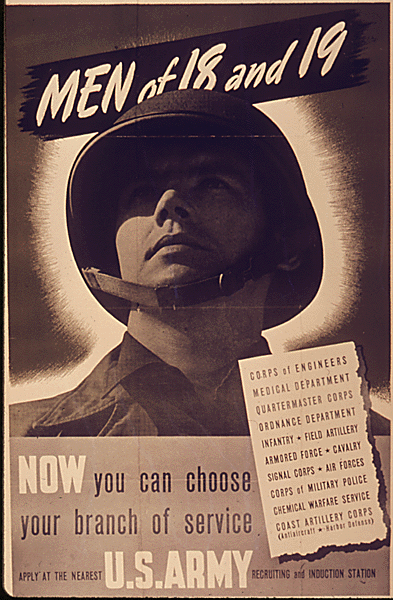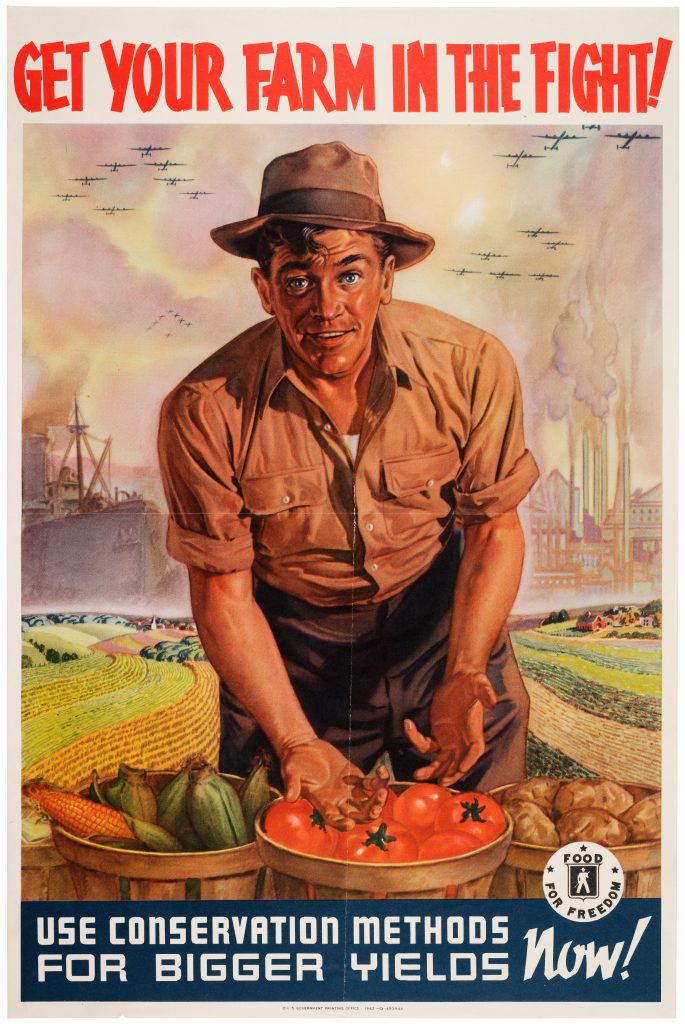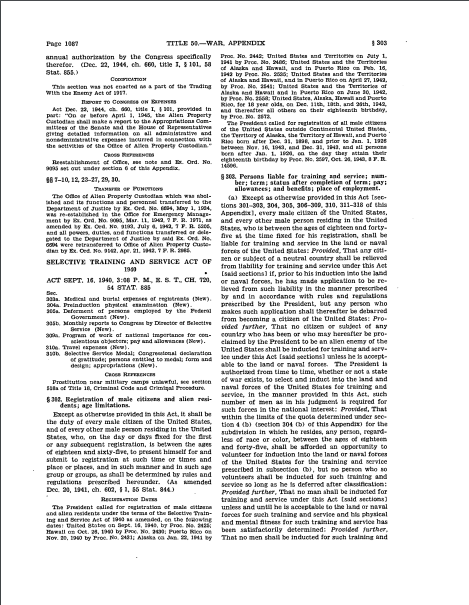Office for Emergency Management, Office of War Information, Domestic Operations Branch, and Bureau of Special Services, “Men of 18-19. Now you can choose,” Digitized Photograph, 1943
The artist of this poster is unknown; however, its credits belong to the Office for Emergency Management, Office of War Information, Domestic Operations Branch, and Bureau of Special Services. This poster was created in 1943 and its original publication location is unknown. In an attempt to attract young adults into joining the U.S. Army, the artist uses text in order to inform viewers of a new feature in joining the branch. It claims that “Now you [young men] can choose your branch service.” In the extensive list of services shown, young men are able to sign up for the signal corps, chemical warfare service, quartermaster corps, etc. Although it implicitly incorporates a masculine theme, it can be inferred that this is part of building military masculinity as this poster targets men of 18 and 19. The array of services that young men are able to sign up for demonstrate the abundance of opportunities that branches provide men in an attempt to boost the concept of American manhood. This source can be viewed through the National Archives Catalog webpage under World War II Posters, 1942 – 1945.
Office for Emergency Management, Office of War Information, Domestic Operations Branch, and Bureau of Special Services, “Get your Farm in the Fight,” Digitized Photograph, 1943
Although there is no specific artist is cited for this poster, it is credited to the Office for Emergency Management, Office of War Information, Domestic Operations Branch, and Bureau of Special Services. This poster was created in 1943 and its original publication location is unknown. During WWII, the gradual demand for crops caused a correlational increase in agricultural labor. In order to meet these demands, posters such as these were created in order to convince farmers to contribute to the war effort. Farmers, who were predominantly male at the time, were chosen as models for war propaganda like this. By placing a farmer in the foreground with battle planes in the background, this and many other posters attempt to convince farmers that their occupations are just as important to those on the line. Notions of masculinity shaped the ideal farmer, one who is ready to metaphorically fight alongside soldiers. This source can be viewed through the National Archives Catalog webpage under World War II Posters, 1942 – 1945.
“Food will Win the War. Walt Disney,” YouTube video, 5:41, (2012)
Created by Disney for the United States Department of Agriculture, this video targets farmers and American men to contribute to the war efforts. Although the publication location is unknown, it was published in 1941. Like in many propaganda pieces, farmers in this short film were portrayed as strong, white men, alluding that the ideal farmers are male. The video’s narrator uses analogies to describe the importance of agriculture, describing crops as weapons to combat the Axis powers. Not only does this video use patriotism in order to convince American men for work, but it also metaphorically compares farmers as soldiers fighting alongside combatants. In correlation to the Selective Training and Service Act of 1940, the narrator mentions Franklin Roosevelt’s Four Freedoms as part of convincing men. This video can be found on YouTube.
U.S. Congress. United States Code: Selective Training and Service Act of , 50a U.S.C. §§ 302-316 Suppl. 5. 1940. Periodical
In an effort to anticipate the important role farmers would play in achieving Freedom from Want, Congress provided exemptions from military service for young farmers and farm workers. Passed in 1940, congress ratifies the Selective Training and Service Act of 1940 in order to enforce agricultural labor as “necessary” and “regularly engaged.” Military branches stressed increased agriculture work as crucial to fulfill farm work shortages. During a time when men were needed for the frontline, farmers, presumably male, were also needed to contribute to the war efforts. This source was found on the Library of Congress webpage.



